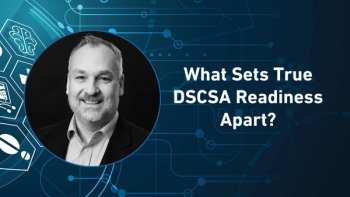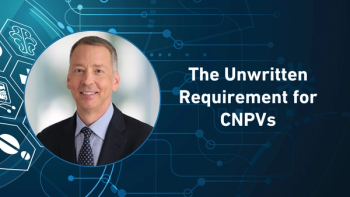
- Pharmaceutical Commerce - May/June 2011
Get Ready for EHRs as the Essential Communications Platform for Pharma
Electronic health-record systems (EHRs) are bringing needed drug information to the point of care for prescribers
The federal government is throwing a huge party, and pharma firms would be wise not to show up late! Oh the feds aren’t calling this a party—they rarely do. But how else could you describe a multi-billion dollar outlay of federal dollars focused on the tiny sector of the economy known as electronic health records (EHRs) and the resultant intoxication of the Healthcare industry? Throw in a hefty waiver of Stark inurement laws that now allow hospitals to spend their money directly on referring physicians and you have the makings of a real hootenanny! Pharma regulatory and marketing types are on the guest list with seats at some of the best tables, but many haven’t shown up at the door—until now.
Roughly one-third of U.S. physicians now use an EHR and over one-third (almost 200,000) now ePrescribe. [1] Over half of physicians will be using an EHR within 18 months according to both federal government estimates and PDR Network annual survey of physicians. Adopting an EHR means ~$44K (or more) per physician in direct cash payments from the feds. Failure to adopt means cuts to Medicare reimbursement; even docs can handle that type of accounting! And importantly, funding for EHR adoption is not tied to the national healthcare legislation and enjoys bipartisan support. The dollars are real, and not going away.
Note that simply purchasing an EHR does not qualify a physician or hospital for federal dollars. Providers must “Meaningfully Use” an EHR to qualify for funding and avoid Medicare penalties. The feds have compiled a detailed list of EHR-related activities that providers must follow to fulfill Meaningful Use. Important for pharma is the fact that Meaningful Use requirements are broad, cover most of physician activities, documentation and medical records components, and include e-prescribing and an electronic connection to patients.
MD Workflow: Chat, Chart and Charge
A quick look at physician workflow changes associated with EHR adoption provides a clearer view of the opportunity for pharma. Physicians make a living by repeating three important steps: interviewing and examining patients (Chat), recording notes and diagnostic information regarding the patient (Chart) and filling out the charge capture forms that include CPT and ICD9 codes (Charge). In a paper-based office, two of these three steps involve paper and forms. Adopt an EHR and suddenly Chart and Charge—steps critical to physician income—move to a digital platform where other information can (and should) be a click away.
Looking at this workflow using the lens of a pharmaceutical manufacturer, a paper-based practice offers few options to accomplish the holy grail of pharma—getting integrated into doctor workflow. In short, paper charting, charging and prescribing offer pharma little opportunity for workflow engagement. EHRs open a new and more powerful venue for appropriate and convenient physician engagement in workflow. They are redefining the playing field for physician communication.
Of particular note is the impact on pharma of e-prescribing, which is required to obtain federal funding for EHR adoption. e-Prescribing puts a myriad of services at the prescriber’s fingertips that can hurt brand teams (e.g., strict formulary compliance, pre-auth form requirements) or help (rapid access to patient education, financial assistance or adherence programs). When physicians, like other consumers, see the kind of customized linking, anticipating and prompting offered by free online services such as Amazon or Orbitz, they expect a similar experience from their EHRs; often they are disappointed.
PDR Network recently conducted a survey of providers (including over 100,000 physicians), as well as EHR vendors and pharma manufacturers. [2] The majority of respondents found “valuable” or “very valuable” access to drug-specific content integrated into their EHRs such as patient education materials, relevant Alerts or REMS, coupons or co-pay programs, pre-auth forms, peer-reviewed articles and the like. This survey and related focus groups show that physicians not only value these services; they expect them. At PDR Network, we are working with EHR vendors, our pharma partners and other groups including medical societies, professional liability carriers and the FDA to ensure that all relevant and drug-specific regulatory and product support services are integrated into EHRs and available to physicians at the point of care with a click. The work is challenging but rewarding; and the EHR and pharma markets have responded with great enthusiasm.
Mobile support services
Also of note is the impact of EHR adoption on mobile use. Many physicians have joined the Apple iPad/Pod/Phone craze and others have gone the Droid or Berry route. But mobile screens that once hosted standalone drug or clinical apps increasingly now display EHRs. The PDR Network survey found that one-third of EHR users could already access their EHR via their mobile device and the vast majority expects to use mobile to access their EHR soon.
This maps well with the EHR vendors who responded to the 2011 PDR Network survey. These vendors indicated they currently offer mobile access to their EHRs or will within the next 12 months. 60% of physicians surveyed use standalone mobile apps less, or not at all, once they begin accessing their EHR via mobile, because their EHR contains the drug and clinical information they once accessed via standalone mobile apps: “Why visit the cow when the milk is in the fridge?” At PDR Network, while we will continue to provide content via our mobile platforms, we are increasingly focusing on EHRs as the platform for engaging physicians at their practices and in their workflows.
The PDR Network survey of physicians also showed that most physicians were aware of online drug-support services available at pharma provider portals but that they rarely used these portals. These services include drug-specific patient education materials, patient financial assistance, peer-reviewed articles, relevant Alerts and REMS. But these portals are often long on programming but short on viewers. On the other hand, over half
of physician respondents indicated that they would access these drug support services, and would find them “valuable” or “very valuable” if they were integrated into their EHR.
The message to pharma is clear: Integrate regulatory and marketing services into EHRs and thereby into physician workflow if you wish to be physician-relevant. And consider expanding ROI from past investments in online provider portals by driving traffic from EHRs to these portals.
The heterogeneous EHR and pharma marketplaces
Synergies between pharma and EHRs are potentially strong but are challenged by the heterogeneous nature of both the pharma and EHR markets. There are roughly 120 EHRs that fulfill federal requirements for EHR payments (aka EHR “Meaningful Use” requirements) and, based upon a comprehensive PDR Network mapping of U.S. EHR services, they vary widely based upon technology used (client-server vs. ASP), practice setting (inpatient vs. outpatient), specialties served, growth rates, geographic coverage and other criteria. A pharma brand manager wishing to make drug-specific content and services available to a large number of physicians via EHRs would need to navigate through a maze of different EHRs vendors and technologies, then fund, create and support dozens of EHR interfaces in order to achieve relevant market-share in any physician specialty. The PDR Network survey of top-20 pharma firms demonstrated that the majority had developed, or were in the process of developing, a strategy to leverage EHRs to better communicate with physicians. But 90% identified the large number and complexity of EHR vendor systems as a primary obstacle to collaborating with EHRs.
Similarly, there are over 1,000 unique medications for which EHRs could be a valuable physician communication platform, but the goals and EHR wish-lists for pharma brands varies substantially. EHR vendors that wish to provide their physician users with a host of drug-specific regulatory and product support services integrated into their EHR would have to contact, sell to and interface with hundreds of pharma brand teams in order to have a reasonably comprehensive pharma offering to integrate into their EHR. And frankly most EHR vendors are too busy pursuing the gold rush of sales to providers to spend a lot of time developing a pharma strategy in a vast, highly fractured and complex pharma market.
Indeed the PDR Network survey demonstrated strong interest in Pharma and EHR collaboration to improve drug regulatory and support information and services for physicians, but that the cost and complexity of creating and maintaining hundreds of EHR-brand and brand-EHR relationships and interfaces was a primary challenge.
EHRs: regulatory, liability and adverse event reporting
Of particular note are the challenges and opportunities for pharma firms to fulfill regulatory and liability protection goals via EHRs. REMS requirements and related FDA-mandated physician messaging have raised the bar for physician engagement in the past two years. And getting these programs delivered to the physician at the point of care via EHRs is a powerful and perhaps obvious strategy. As Dr. Janet Woodcock, director of CDER at the FDA recently stated at the PharmEHR Summit, [3] hosted by PDR Network, “It is very important to get REMS programs integrated into physician workflow via EHRs.” At PDR Network, we now include integration of REMS programs with our EHR partners as a standard element for our REMS physician outreach.
Even more basic is the concept of ensuring that the full FDA-approved labeling is available to physicians via their EHRs. Sadly this is not the current standard though PDR Network is actively rolling out our full labeling content service—including a CME program for every full label we distribute—to our EHR partners as a means to fulfill FDA regulations and also to help protect both the manufacturers and the physicians from potential liability. As Alan Waxman, former Chief Counsel for Pfizer and current chair of the Life Sciences Group at Kaye Scholer (New York) noted at the PharmEHR Summit, “As EHR penetration increases in doctors’ offices, is this the means by which judges, juries and courts will determine if the manufacturer has made a real effort to discharge their Duty to Warn prescribers? Will this be the new standard of care for pharma?”[4]
The answer is obvious. The ramifications for pharma, physicians and liability insurers is sobering. For physicians, will the lack of timely access to full, updated and then-current FDA labeling via EHRs create new liabilities when U.S. courts have already made clear that current FDA-approved labeling is the standard to which physicians are held in medical malpractice litigation? [5]
In a similar vein, EHRs represent a powerful platform to improve both the quality and timeliness of adverse drug event reports. Multiple reviews of the current adverse event reporting systems have shown substantial under-reporting as well as poor report quality. The FDA’s own expert panel in November of 2010 described the current system as “seriously flawed” and noted that reports “often lack essential information such as the age and gender of the patient involved, the dose of the drug taken, the company that manufactured the drug and a clinical description of what happened to the patient.” [5]
While the results of the current adverse event reporting mechanisms may be low, the price is none-the-less high, as manufacturers spend hundreds of millions of dollars hosting call center-based reporting networks that are difficult for physicians to find, cumbersome to use. To motivate physicians, adverse event reporting needs to be simple and finger-tip accessible via EHRs.
Studies of adverse event reporting integrated into EHRs [6] have shown dramatic improvement in reports and were among the reason that PDR Network is rolling out an adverse drug event reporting utility via our EHR partners on behalf of our pharmaceutical clients and our physician users. The opportunity to improve reporting and reduce costs is simply too great to ignore.
The ability to fulfill regulatory requirements at a lower cost and in a manner strongly supported by the FDA, combined with the potential liability in failing to harness EHRs as a platform for regulatory and liability mitigation, represent a strong carrot and stick for pharma regulatory and medical affairs executives to consider.
The PDR Network approach
PDR Network has a 65-year history of aggregating credible drug information and distributing it to all U.S. physicians. The company has invested substantially in the EHR marketplace in order to deliver regulatory and marketing solutions from our pharma clients to physicians via our EHR partners. PDR Network has contracts with all major pharma firms and most have indicated strong interest in using EHRs as a new and powerful vehicle to communicate regulatory and drug support messages and services to prescribers.
We have been impressed by the fact that each pharma brand has its own unique set of EHR priorities, from clinical specialties of interest to the specific content and services the brand team wishes delivered to prescribers at the point of care. So while interest in integration into EHRs to engage physicians appears to be ubiquitous, specific goals, content, services or transactions vary widely. Also of note is the fact that many brand teams have already invested heavily in online provider portals to deliver drug-specific regulatory or marketing content and services. What these clients frequently want is traffic driven from EHRs to these portals when physicians wish to access these existing online services. Here our approach has focused on links and single sign on.
On the EHR side, we have engaged all major EHR vendors and again found ubiquitous interest in enhanced pharma content and services. The delivery of the FDA-mandated content is of particular interest because failure to deliver this information has potential liability for prescribers and manufacturers as well as the EHR vendors themselves.
This having been said, there are several areas where pharma firms can, and have, engaged EHRs directly and where the consolidation role of PDR Network is not relevant.
For example, many EHRs sell de-identified data for purposes of pharma research or clinical trials recruitment, and the larger EHR systems have sufficient patients in their databases to offer direct value to pharma.
Over the next 24 months it is clear that EHR adoption will continue to climb and will pass the 50% threshold. In addition to the absolute number of physicians this represents, hitting and passing the 50% adoption threshold has other impacts. Certainly plaintiff’s bar is well aware of physician EHR-adoption trends in any community and will jump on this issue when EHR functionality might have reasonably circumvented a patient injury such as drug-drug interaction checking.
From a hospital/inpatient standpoint EHR adoption will also continue to grow. Expect to see EHR adoption by hospitals become an explicit or practical requirement to maintain Medicare certification. PC
BOX: WHAT PHARMA SHOULD DO NOW
Important steps that pharma regulatory and marketing executives should consider are as follows:
- Understand the forces driving EHR adoption by U.S. prescribers
- Understand the current status and trends of EHR adoption by prescribers of interest based upon specialty, practice location, inpatient vs. outpatient, etc.
- Understand the changes to physician workflow represented by EHR adoption and the resultant opportunities to provide physicians with the regulatory or marketing services that physicians and patient value, at the point of care
- Create a list of regulatory or marketing goals that can be advanced via integration with EHRs — including FDA directives and mandates such as REMS communications
- Consider a strategy to drive traffic from EHRs to pharma provider portals.
Federal funding will drive EHR penetration from one-third of physicians to two-thirds or more in the next few years. Pharma has devoted enormous resources trying to drive prescribers to manufacturer portals—with little to show for it—and EHRs present a golden opportunity for pharma to provide valuable drug support resources within prescriber workflow.
REFERENCES
1. The National Progess Report On E-Prescribing and Interoperable Healthcare, Surescripts, 2011.
2. “Physicians, EHR & Pharma/Device: What They Want from Each Other,” Ed Fotsch, MD, COE, PDR Network; Presented at the 2010 PharmEHR Summit, PDR Network Survey Data on File
3. In April 2011 PDR Network hosted the first annual PharmEHR Summit bringing together the top 20 pharma firms and EHRs along with senior FDA officials from CDER and CDRH to discuss the opportunities to advance pharma regulatory and marketing goals using EHRs as the communication platform to physicians. This 2-day invitation-only summit will again be hosted by PDR in 2012.
4. Ibid.
5. Washington Drug Letter 11/29/2010 6. http://www.ahrq.gov/about/annualmtg08/091008slides/Lynch.htm ; http://www.asterstudy.com.
Articles in this issue
over 14 years ago
Introover 14 years ago
What Makes a Pharmaceutical Industry Leader?over 14 years ago
How REMS Affect Pharmaceutical Distribution Processes and Partnersover 14 years ago
Patient-Administered Therapies Drive New Delivery System Designsover 14 years ago
For a Lucky Few, Biopharma Expansion a Reality Againover 14 years ago
Making Pallets a Supply Chain Asset Instead of an Unrecoverable CostNewsletter
Stay ahead in the life sciences industry with Pharmaceutical Commerce, the latest news, trends, and strategies in drug distribution, commercialization, and market access.





